 |
|
Perseverance (Atlas V) 30 July 2020 |
Space Launch Complex 41 Cape Canaveral Air Force Station |
| The Mars 2020 mission spacecraft that includes the Perseverance rover launched from Space Launch Complex 41 aboard a United Launch Alliance Atlas V rocket at 7:50 a.m. on 30 July 2020. | |
Excerpts from NASA's Mars 2020 Perseverance Launch Press Kit |
|
With the help of celestial mechanics, the spacecraft will arrive at Mars about seven months [after launch]. The date Perseverance lands on Mars — February 18, 2021 — remains the same regardless of the launch date. Key phases of the Mars 2020 mission are launch, cruise, arrival (also known as entry, descent and landing) and Mars surface operations. During a prime mission that will last at least one Mars year (about 687 Earth days), Perseverance’s exploration of Jezero Crater will address high-priority science goals for Mars exploration, including key questions about the potential for life on Mars. The rover’s astrobiology mission will search for signs of ancient microbial life, characterize the planet’s climate and geology and collect samples for future return to Earth. Perseverance will also gather knowledge about, and demonstrate the viability of, technologies that address the challenges of future human expeditions to Mars. The Ingenuity Mars Helicopter, a technology demonstration, will also ride along to Mars, attached to the belly of the Perseverance rover. Weighing just about 4.0 pounds (1.8 kilograms), the Ingenuity Mars Helicopter is a small, autonomous rotorcraft designed to test — for the first time — powered flight in the thin Martian atmosphere. This lightweight helicopter does not carry any science instruments. Ingenuity’s performance during its experimental test flights will help NASA make decisions about small helicopters for future Mars missions, where they could perform in a support role as robotic scouts, surveying terrain from above, or as full standalone science craft carrying instrument payloads. Taking to the air would give scientists a new perspective of a region’s geology and allow them to peer into areas too steep or slippery to send a rover. In the distant future, they might even help astronauts explore Mars. A two-stage United Launch Alliance (ULA) Atlas V 541 launch vehicle will lift the Mars 2020 spacecraft from Launch Complex 41 at Cape Canaveral Air Force Station, Florida. The numbers “541” in the launch vehicle’s designation signify a 5-meter (17- foot) short payload fairing, four solid-rocket boosters, and a one-engine Centaur upper stage. It stands at 197 feet (60 meters) tall. This will be the 11th Mars launch on an Atlas rocket, and the fifth by the Atlas V following NASA’s Mars Reconnaissance Orbiter in 2005, Curiosity rover in 2011, MAVEN orbiter in 2013 and InSight lander in 2018. The spacecraft will ride into the sky inside a protective payload fairing atop the Atlas’ Centaur stage. Approximately 50 to 60 minutes after launch (depending on when liftoff actually occurs), the Mars 2020 spacecraft will separate from the launch vehicle and complete the rest of its journey to Mars on its own. |
|
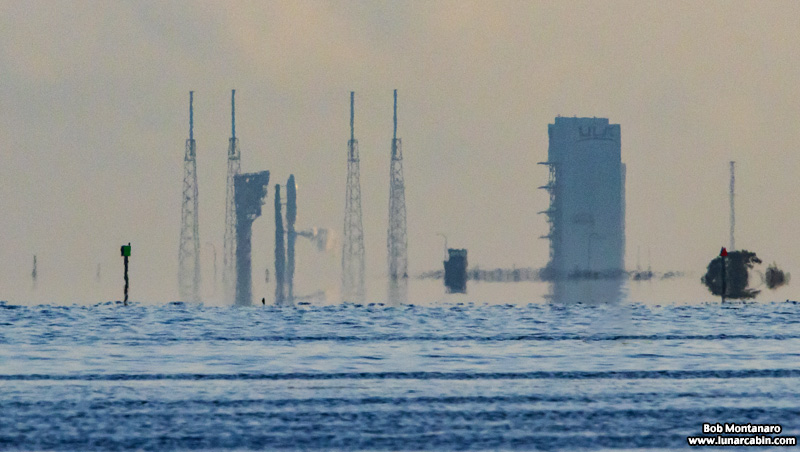 |
|
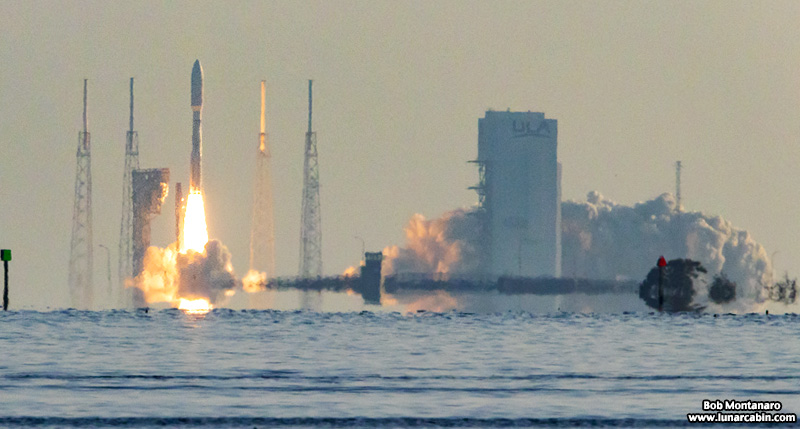 |
|
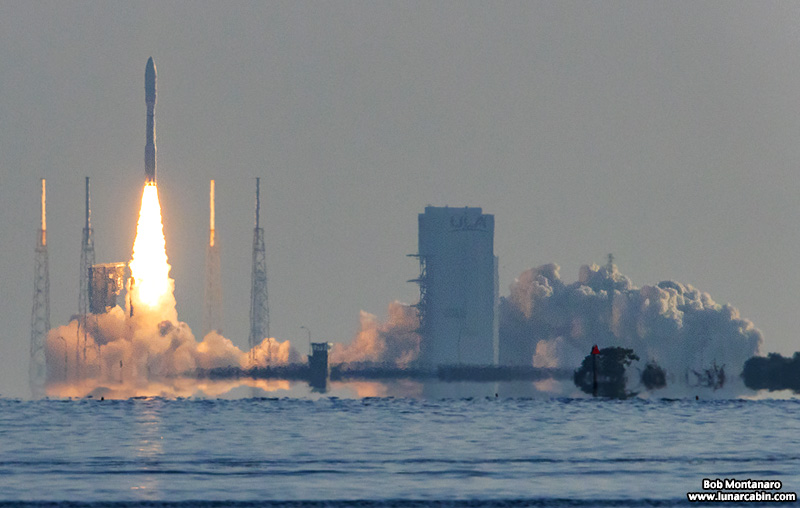 |
|
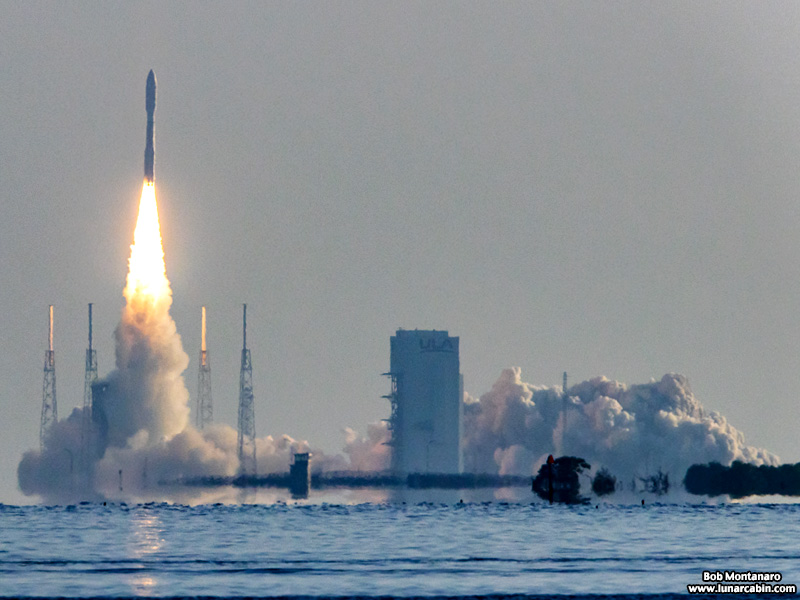 |
|
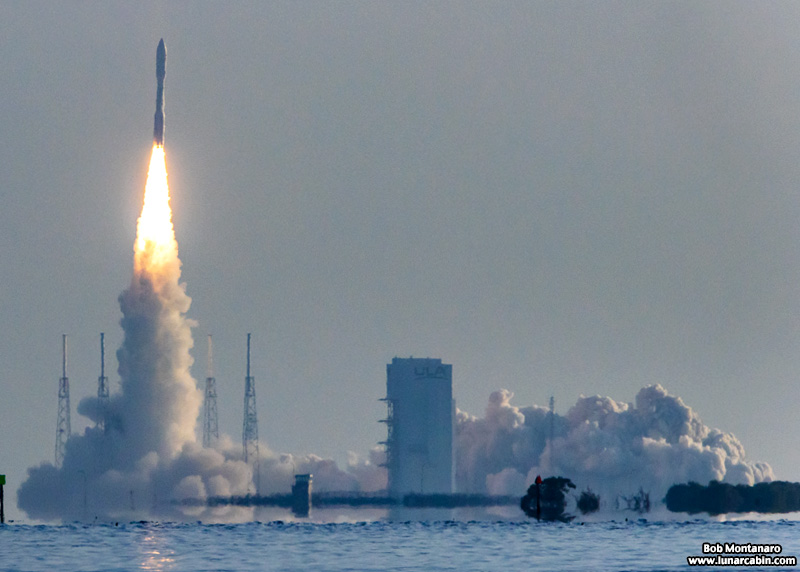 |
|
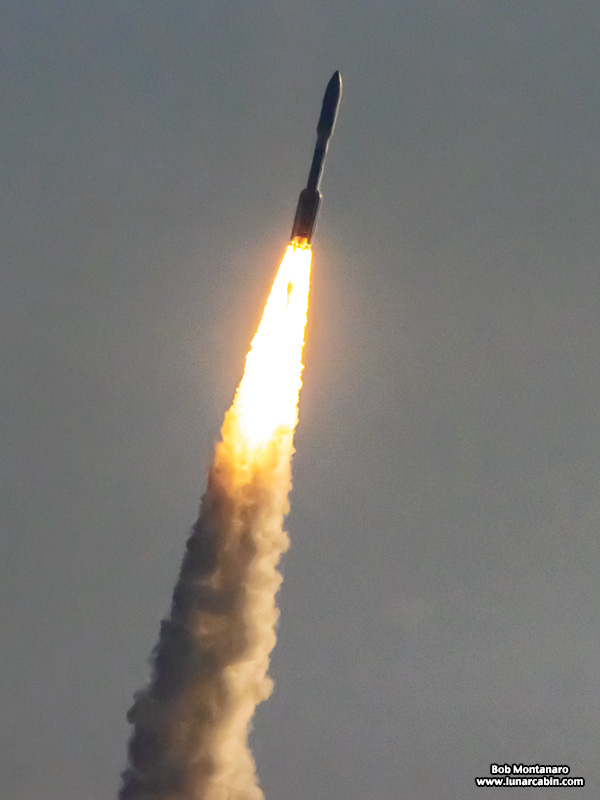 |
|
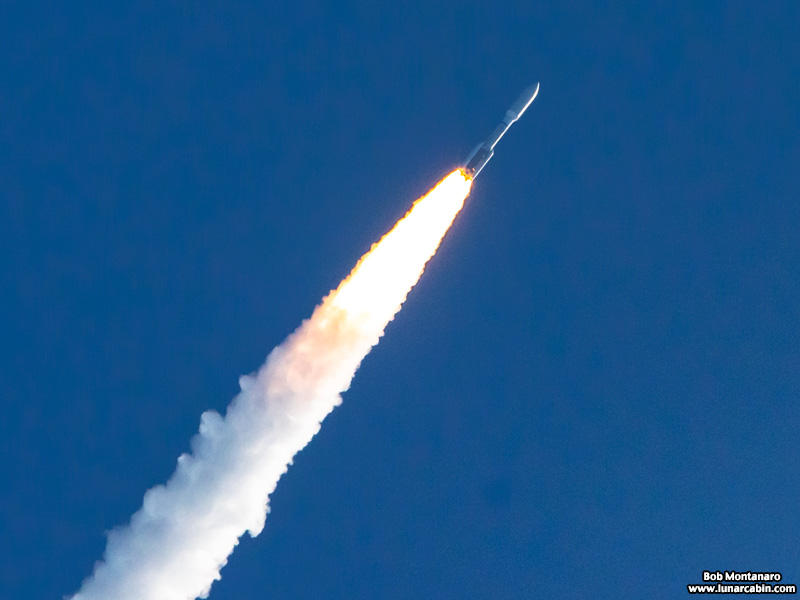 |
|
 |
|
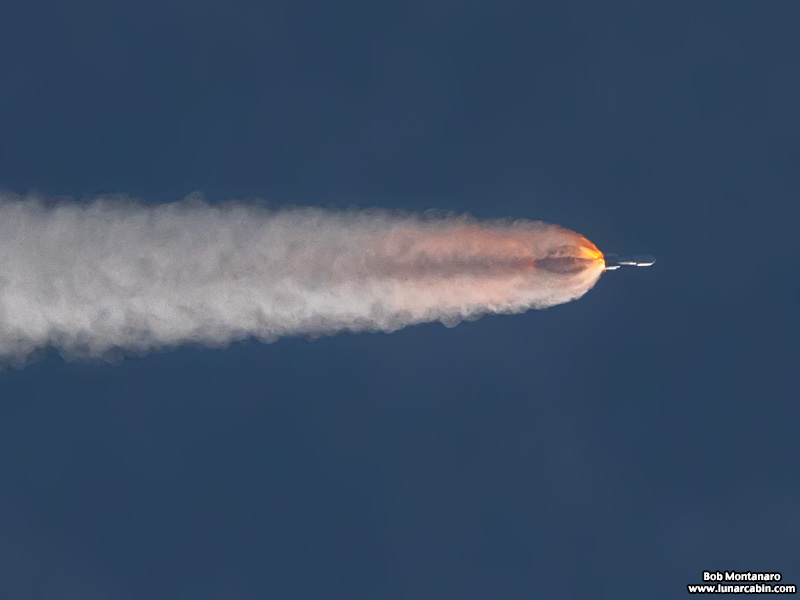 |
|
 |
|
 |
|
Separation of the Solid Rocket Motors. |
|
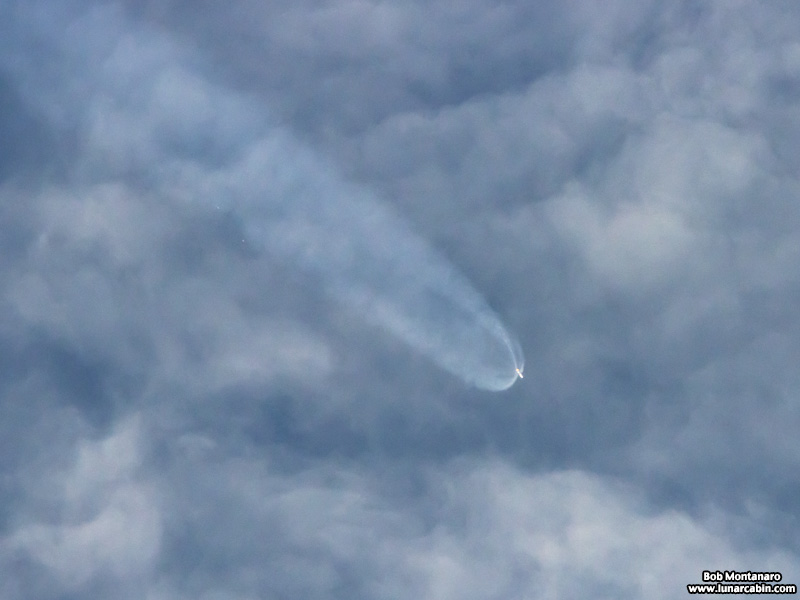 |
|
Two of the Solid Rocket Motors can be faintly seen falling to Earth about halfway back along the exhaust trail. |
|
 |
|
80 images stacked show the flight of the rocket as it arcs over the Atlantic while the wind blows the exhaust trail around. |
|
All contents copyright Lunar Cabin |
|